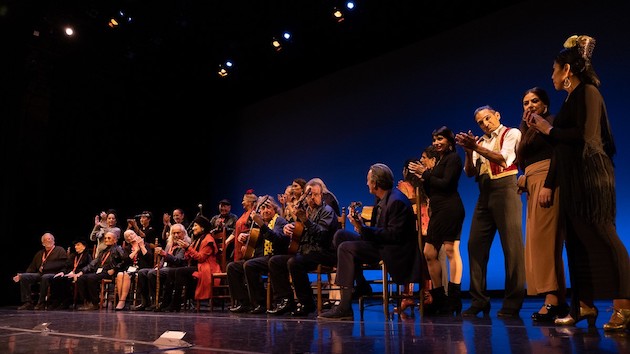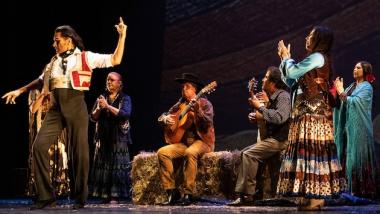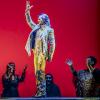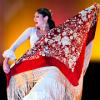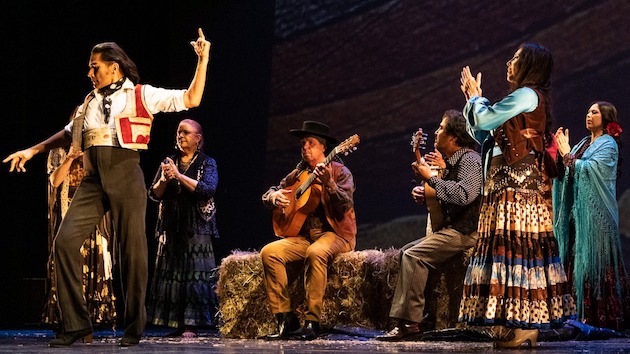
If Saturday’s singular production Abanico: 100 years of Flamenco in the Bay Area didn’t quite live up to its centenary billing, the evening delivered something far more precious. Packed with a standing-room-only audience, Fort Mason’s Cowell Theater became something like a living time capsule, a big-hearted history lesson, and a communal celebration all rolled into one.
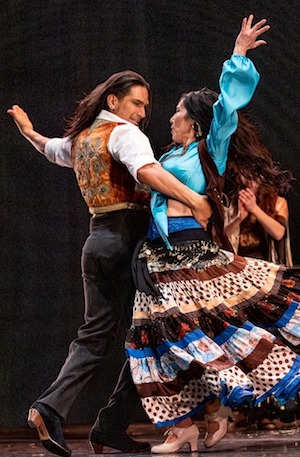
Spearheaded and produced by the Bay Area Flamenco Festival’s Nina Menéndez, Abanico gathered together just about all of the region’s flamenco clans for an evening designed as an homage to the venues, teachers, and performers who made the Bay Area such a vital hub for the Andalusian art form. Unfolding over the course of eight sets, the production often felt like a family affair, starting with dancer and choreographer Yaelisa’s tribute to The Old Spaghetti Factory’s back room, Las Cuevas, where her mother, vocalist Isa Mura, was one of the performers who brought flamenco into a North Beach eatery frequented by Beat poets, abstract expressionist painters, and jazz cats.
Accompanied by expert guitarist Jason “El Rubio” McGuire and veteran vocalist José “El Grillo” Blanco, Yaelisa, Roberto Zamora, and Fanny Ara evoked the seamless flow between performance and life, moving from a “backstage” set to an arresting sequence dominated by Yaelisa’s ebullient footwork. Unlike most dance forms, flamenco doesn’t need to take up much space. The percussive stomps, lightning pivots, raised arms, and undulating wrists can capture a universe of emotions within a few square feet, which makes sense since long before the art form moved into theatrical settings it thrived in living rooms, courtyards, and cantinas. Despite Cowell Theater’s expansive stage, most of the dances occupied a small swath of the floor.
One exception was La Tania’s vivid tribute to her mentor, dancer Ciro Diezhandino (the main attraction in San Francisco’s pioneering flamenco venue, Casa Madrid). A group choreography that made dazzling use of the long-tasseled white and gold shawls, the beautifully balanced piece was both playful and deeply moving. Starting as a trio with the wraps suggesting the stages of life, the dance concluded as a quintet with La Tania passing the torch (well, shawl) to her students.
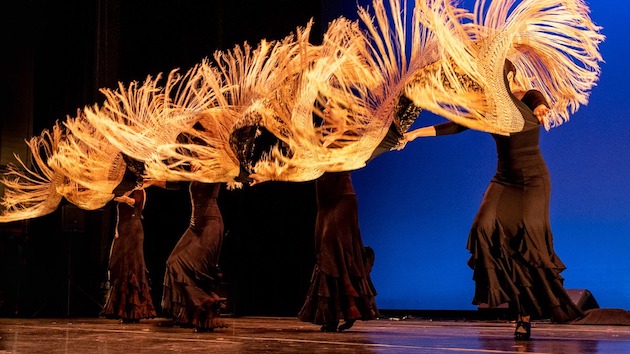
With a couple of hay bales for ambiance, Nina Menéndez directed a spirited hootnanny flamenco tribute to Los Flamencos of the Renaissance Pleasure Faire, while Carola Zertuche designed a passionate celebration of the pioneering company she directs, Theatre Flamenco, which is well into its sixth decade. Whipping around in their long-tail bata de cola skirts, Zertuche, Radha Svetnika, and Cynthia Sanchez effectively referenced flamenco roots without sacrificing a moment of immediacy.
Part of what made the evening so potent was the short introductory videos and photo montages that provided history and context for each piece. Before the concert and during the intermission, it was striking to recognize the artists captured in their prime decades ago who were in the audience as honorees. Some of the honorees died far too young, like the gorgeous dancer, teacher, and Casa Madrid proprietor Cruz Luna (1938–88), whose spirit and feline physicality was evoked by the excellent Aldo Ruiz, ably accompanied by guitarist Dan Fríes.
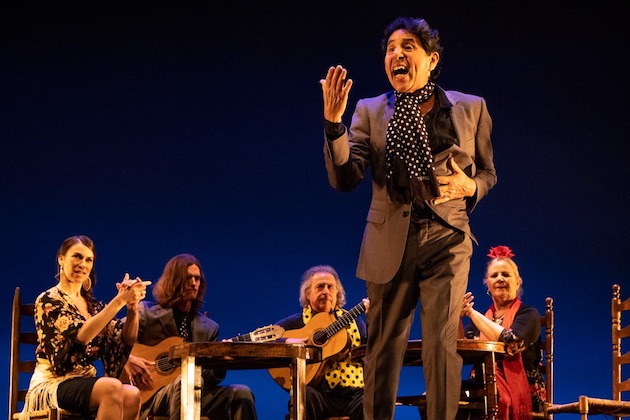
Ruiz returned to the stage to celebrate the great dancer and teacher Rosa Montoya, who was on hand for the tribute with dancers Mizuho Sato and Melissa Cruz (who directed the set). And in a powerful statement about the Bay Area scene’s deep and enduring ties to flamenco’s source, Roberto Zamora directed an homage to the gitano artists who have lived in the Bay Area and have welcomed Americans seeking to study in Morón de la Frontera. Seated around several tables with guitarists Keni el Lebrijano and Gopal Slavonic and Menéndez as vocalist, he and Clara Rodriguez demonstrated how the most direct and concise response to the music can be captured with a few judicious steps.
Menéndez introduced the final commissioned piece, “Sol y Luna: The 1990s,” with perhaps too emphatic a disclaimer. She’s a purist who loves undiluted gitano soul. The rumba flamenco fusion that found a home at Financial District restaurant Sol y Luna is flashy as music and dance, and one didn’t need Menéndez’s caveat to recognize the difference in depth between Phoebe “La Fibi” Vernier and Bob Sanders’s entertaining and inoffensive set and the earlier dances.
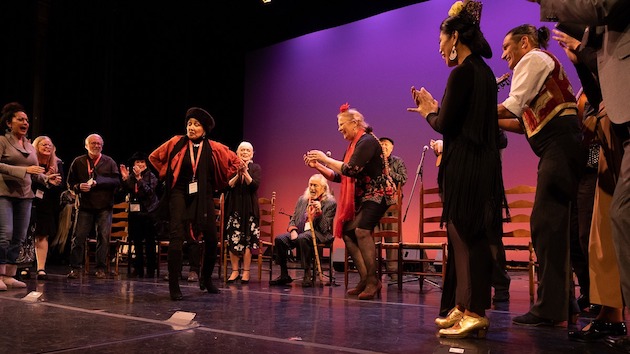
The concert ended with some two dozen honorees arrayed across the stage, taking turns singing and dancing for a finale that spoke to a unique aspect of flamenco. It’s an art form where dancers can become more powerful and expressive later in life, when youth’s speed and flexibility have diminished. Watching these veteran artists inspire one another and delight in each other’s company was the caramel on the flan, and an all too rare opportunity to give thanks to artists who have given so much.
